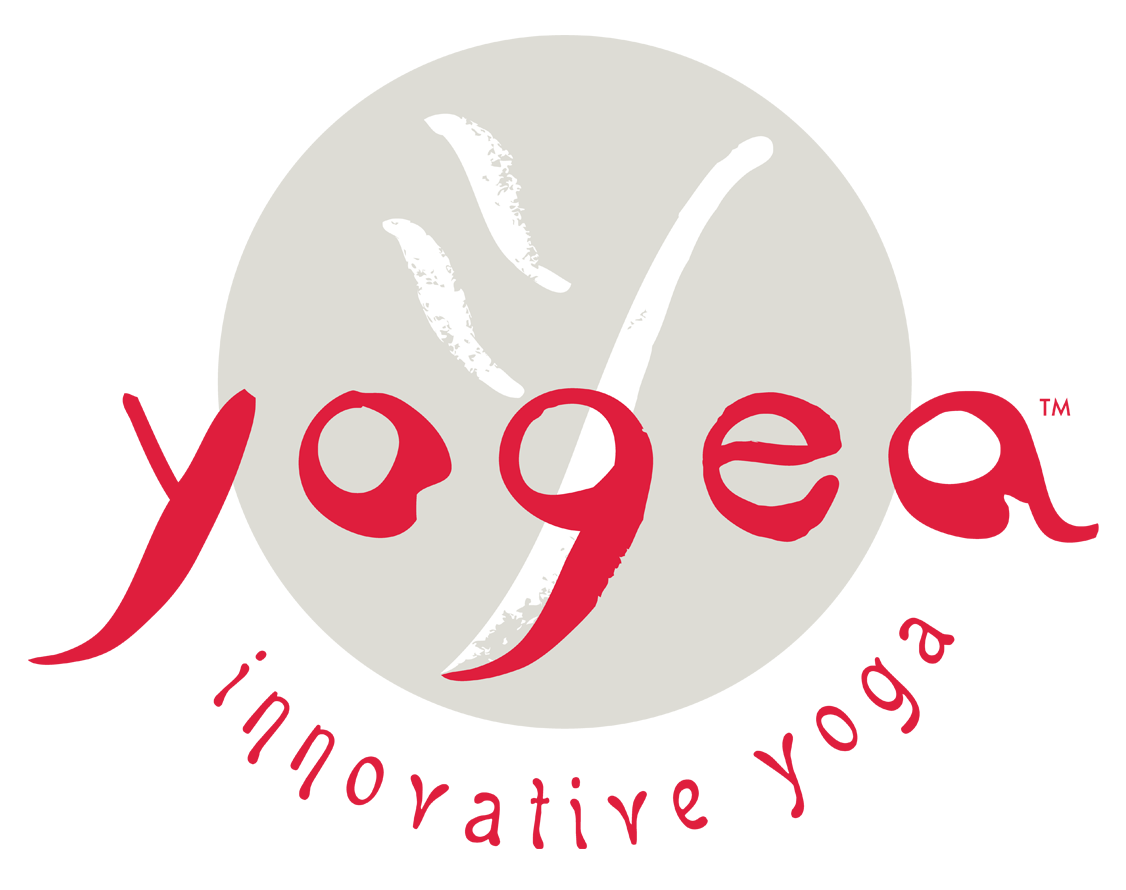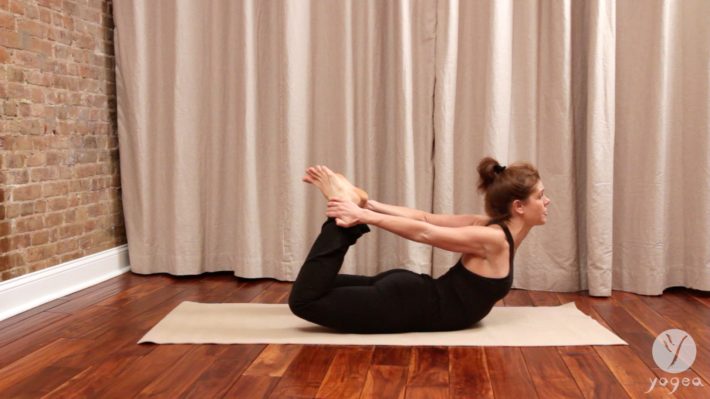Welcome to Yogea’s reclining back bending series. This section features Sphinx pose (Bhujangasana); Bow Pose (Danurasana); Side Tilted Bow (Supta-Parsva Danurasana); Frog Pose (Gherandasana).
The series starts with Bhujangasana – Sphinx pose as you bring the shoulders over the elbows and the elbows in line with the chest. Extend the legs long, avoid sickling the feet and open the shoulders, while widening through the collar bones. This pose stretches the mid back while keeping the lower back long; opens the shoulders and lifts the sternum. To counter balance press the palms and elbows firmly into the ground and lift the belly as you gaze at the navel. This transitional pose stretches the spine and lengthens the lower back, while toning the abs.
Next, clasp the ankles with both hands while keeping the hips square and the shoulders even. As you press the belly navel into the floor lift the sternum and the chest and work the knees towards the ground. Keep on lifting and pulling in opposition in both directions. Danurasana opens the heart, and trains the backbend to happen from the mid back, without cramping the lower back. The pose has a rejuvenating and revivifying effect on the whole body, while boosting metabolism and promoting intestinal health.
Once you have assumed bow pose tip it to the side to enhance the stretch through he shoulders and expand into the backbend in a side bow. Keep on opening the shoulders, while arching the spine. Supta Parsva Danurasana massages the side of the waist and the gluteus, while ensuring a safe back-bending practice.
Then cradle back to center and bring the big toes to touch, clasp the shins or ankles and this time lift the knees as well as the chest. This variation of Danurasana provides further massage through the thighs and stretches the quads in tandem with opening the spine and the shoulders.
Last, lower the heels into the buttocks while reversing the clasp and pressing the keels on the hands into the tops of the feet to come into Frog Pose. Lift the chest and bend the elbows and once you feel stable there, work towards opening the knees and dropping both heels towards the side of the thighs. Gherandasana stretches the quads, massages the perineum, strengthens and stretches the shoulders and entire spine. It has a rejuvenating and invigorating effect on all the systems of the body.
To counter-pose take child pose (Balasana) releasing hips into knees and stretching arms long. To recover from the back bending series and lengthen the neck make two fists, place one fist on top of the other and massage the third eye. Once you bring your back to a neutral position roll all the way up to sit into a kneeling pose. This winding down section sets the relaxation system response and fills you up with peace.
Yogea Asana Lab is not a yoga routine and should be regarded solely as an educational platform to reinforce proper postural alignment and improve the quality of your practice. The approach is integrated as poses are grouped into different targeted categories. Each set of poses is demonstrated only on one side. The route of assuming poses and releasing through counter-poses is mapped clearly and slowly, allowing time for assimilation and grasping. The main objective is to guide you in and out of poses safely and smoothly, as well as to acquaint you with basic anatomical and energetic principles that weave the geometry of every asana. In turn, you will be able to perform the Yogea routines with clarity, precision and abandonment. As you follow the tips of proper alignment you will feel more stable, ready to deepen your practice and eager to transition gracefully from one stage to the next both on the mat and in life.


Leave a Reply